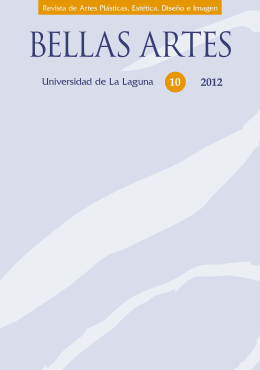Hermann Graf and the Proportion in art: old proposals for research today
Abstract
Taking one of the most complete, yet lesser known, bibliographic collections ever carried out on the research of proportion in art as the main theme, Hermann Graf’s text in Bibliography on the problem of proportion published in 1958, we aim to bring you closer to the conceptual, theoretical and aesthetic aspect derived from proportion in art. Th e aim of this works is to shed some light on the changing studies which, in the middle of the nineteenth century, re-emerged under the prism of scientifi c aesthetics and during the twentieth century were permeated by mystical and esoteric attributions as a result of Matila Ghyka’s contributions among others, distorting procedures and moving closer to the myth. Th e main aim of this work is to off er an analysis of a text, unpublished in our language, in the context of Fine Arts, the value of which goes beyond a purely documentary interest, as it provides a future path for research into proportions, useful for anyone wanting to delve into this subject.
References
Sholfield, P.H. (1971). Teoría de la proporción en arquitectura, Barcelona, Lábor.
Wittkower, R. (1949). Trad en castellano: (1995) Principios de Arquitectura en la Edad del Humanismo. Madrid, Alianza.
Weyl, H. (1980). Symmetry. Trad. en castellano (1991) Simetría. Madrid, McGraw W-Hill.
Funk-Hellet, C. (1932). Les Oeuvres peintes de la Renaissance italienne et le Nombre d’Or, Paris, Vicent Fréal.+
Padovan, R. (1999). Proportion. Science Philosophy Architecture. Londres. Ed. E&FN Spon.
Graff, H. (1958). Bibliographie zum Problem der proporcionen: Literatur ubre Proporcionen, Mass un Zahl in Architektur, Bidenber Kunst und Natur, Speyer: Pralzische Landesbibliotek.
Le Corbusier (1976). El modulor, Barcelona, Poseidón. 2 vols.
Bonell Costa, C. (1999). La divina proporción: Las formas geométricas. Barcelona. UPC.
Pacioli, L. (1959). La divina proporción, Buenos Aires, Losada.
Bouleau, CH. (1963). Charpenters. La géometrie secrète des peintres. Ed. du Seuil. Trad. Al castellano: (1996). Tramas: La geometría secreta de los pintores. Madrid, Akal.
El-Said, I. (1976). Geometric Concepts in Islamic Art, London, World of Islam Festival publishing Company Ltd.
Hernández, R. (1993). Aspectos estructurales, formativos y signifi cativos del canon de proporción en la escultura. Tesis Doctoral Univ. La Laguna. Consultada en http://webpages.ull.es/users/romher.
López Vílchez, I. (2008). Entre la razón y el mito: arte y ciencia en la divina proporción, en Educatio s. XXI, núm. 26, Murcia, Servicio de Publicaciones de la Universidad de Murcia, Pp. 267-288
Livio, M. (2002). Th e Golden Ratio. Trad. Castellano (2009) La proporción áurea, Barcelona, Ariel.
Lawlor, R. (1982). Sacred Geometry. Philosophy and practice, London, Thames and Hudson.
Ghyka, M. (1927). Esthétique des Proportions dans la Nature et dans les Arts. Trad. (1977) La estética de las proporciones en la naturaleza y el arte, Barcelona, Poseidón.
Ghyka, M. (1931). Le nombre d’or. Trad.(1978) El número de oro. Ritos y ritmos pitagóricos en el desarrollo de la civilización occidental, Barcelona, Poseidón.
Neveux, M. (1995). Le nombre d’or. Radiographie d’un mythe. Suivi de La divine proportion. Huntley. Paris. Du Seuil.
Irace, F. y Cimoli, A.C. (2007). DP. La divina proporzione. Italia, Ed. Electa.
Maillard, E. (1960). Les cahiers du Nombre d’or. Paris, Tournon & Cie.
VV.AA. (1965). Proportion, a measure of order. Carpenter Center for the Visual Art, Harvard University.
The works published in this journal are the property of their respective authors, who grant the journal Bellas Artes the right of first publication, as stated in our Authorship Rights Policy.




